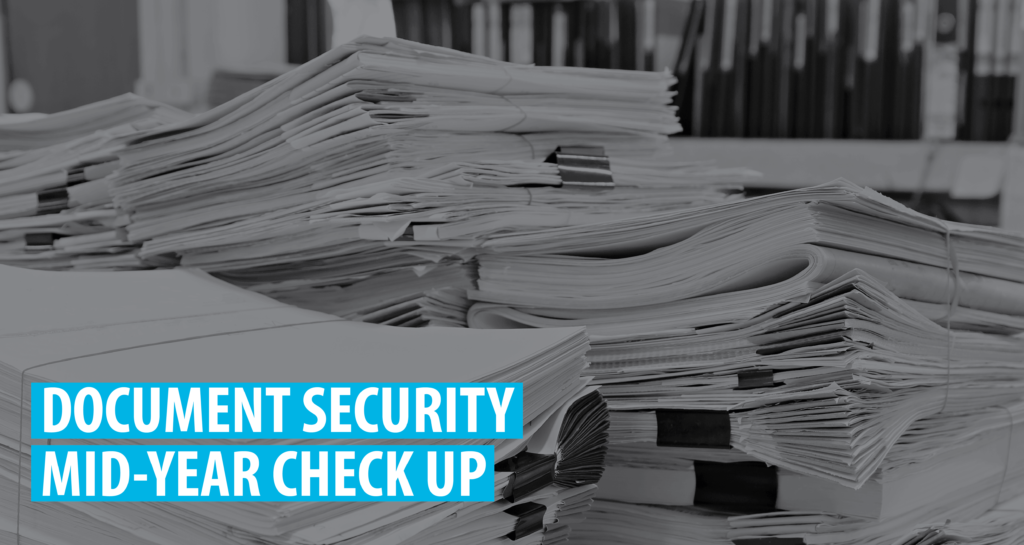Your Document Security Mid-Year Check-Up

Tips for maintaining document security throughout the year
It’s hard to believe that we are already half way through the year. It’s not unusual for a lot of those business goals and objectives we set in January to take a backseat to the everyday tasks that your business requires; but mid-year is a great time to check-in and get back on track. When it comes to securing your records, it’s important to realize that this isn’t a once a year task, but something your organization should be focusing on each and every day.
If you feel like your document security efforts have gotten off track throughout the first half of the year, we’re here to help you do a mid-year check-in and start planning and implementing your document security processes for the final quarters of 2018.
ROUTINE DOCUMENT SECURITY PROCESSES
As we said previously, document security is a continuous effort by all members of your organization to ensure that records are properly used, stored, and disposed of in your day-to-day operations. If you don’t have a document management system in place, here are a few routine things you can implement in your office to ensure you are taking the appropriate precautions to protect information.
ESTABLISH RETENTION REQUIREMENTS:
Make sure that your employees and staff know what records are required to be kept and for how long. In addition, make sure your retention requirements outline how they should be stored and secured.
SETUP SECURE STORAGE AREAS:
If you are storing items on-site make sure that your storage areas have restricted access or that your filing cabinets remain locked and there is an active list of people who have access to those areas. This helps you keep a pulse on who is accessing information and when.
ESTABLISH SECURE DESTRUCTION REQUIREMENTS
In addition to your document retention requirements, you should also outline those items that require secure destruction. We often recommend shredding as much of your office paper waste as possible. This ensures that no items are lost or forgotten and allows you some extra peace of mind that your documents are being securely handled.
SCHEDULE SECURE SHREDDING SERVICES:
To alleviate the stress of your employees tracking and managing document destruction in-house, we recommend working with a certified secure shredding partner, like Augusta Data Storage, to help you manage and track your document destruction.
Augusta Data Storage provides secure, locked, collection bins where employees can deposit papers for shredding. The bins remain locked until their scheduled service date, to help limit access to the information inside. On service day, the bins are collected, and emptied into our secure shred-truck and shredded. You will receive a certificate of destruction for your records which details the chain of custody and serves as proof of destruction for your records.
BEGIN PREPARING FOR YEAR-END DOCUMENT SECURITY NEEDS:
While regular maintenance and security measures are important, it’s also time to start thinking about those annual and bi-annual tasks that sometimes sneak up on you. As a part of your document management policy, you should have information regarding the requirements for archiving records, as well as a purge schedule for outdated records. For example, if you archive records at the end of each year and keep them for a period of 5 years, here are some things to keep in mind in the final months of this year:
FILE ARCHIVING
As you prepare to archive your records and move them from your active file storage area, you will want to plan a time to sort the items that need to be relocated and then find time to box, log, and store them so that you are able to access them later, if needed. If you are short on space for some of your older records, Augusta Data Storage offers off-site secure record storage solutions with 24/7 retrieval access, climate controlled storage for temperature sensitive items, and NARA compliant storage for records requiring those specifications.
FILE PURGING
In addition to archiving your records, you will want to plan a time to sort through your records from 5 years ago, so that you can schedule a bulk purge of those documents when you are ready to remove them from your archived storage space.
